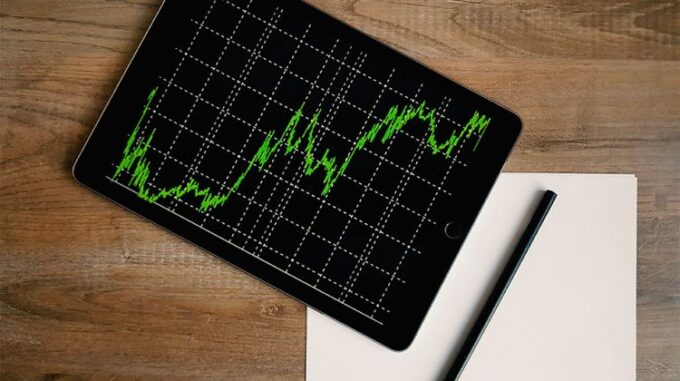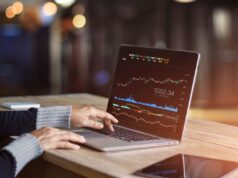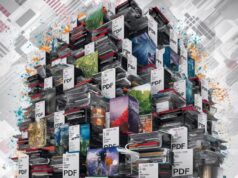Trading apps disrupt the financial markets. They remove entry barriers for a wide audience, offering new and flexible approaches.
Everyone can start trades from anywhere, anytime, and benefit from low transaction costs. Multiple types of assets or commodities become available for exchange on innovative platforms.
A platform’s popularity depends heavily on how effectively users can apply their skills and knowledge. The list of requirements includes the following:

- availability of effective instruments
- learning time needed to start trading with confidence
- regular updates and improvements that allow staying relevant in a constantly changing market
Below, we discuss what makes custom trading software important and what features become essential for earning profit.
How does software increase traders’ bottom line?
With the help of trading software, users:
- identify trends and opportunities
- determine a relevant strategy for reaching success
- execute the strategy in a hassle-free manner
- adjust flexibly to changing market trends
Software must cater to the needs of its users
Novices require features that let them safely learn the basics of trading. It can be clues and heads-ups, copy trading, and a training sandbox. They benefit from a simplified UX.
Rich, flexible functionality enables advanced users to change multiple trading parameters, adjusting to specific market conditions and preferred trading styles.
Trading professionals and those who cannot dedicate much time to trading benefit from innovative features, e.g., AI-based predictions and automation tools. These features help them save time on trend monitoring. Instead, they focus on decision-making.
What is custom trading software development?

A custom approach to the development of trading software is essential. Trading solutions must adjust to rapidly changing market conditions, industry regulations, user habits, etc.
Custom software development means that the engineering team prepares software codebase for specific challenges, such as:
-
- top performance under growing user load
- compliance with security standards
- launch and updates of unique features
- UX planning and improvement
- compatibility with user devices
- and more
Launching much-demanded trading functionality and elaborating on it regularly is critical, delivering requested updates. It becomes possible through maintenance and software expansion.
In-demand trading features

When looking for the best trading tools, users evaluate the relevance of each platform’s functionality for their goals and trading style.
Users focus on the following features:
- Customizable charts
Charts are traders’ main tool. They help spot trends and find trading opportunities.
It is worth offering multiple indicators. Users search, filter, and add applicable to them. Ensure they switch between applied indicators in a few clicks.
Provided charts must be suitable for long working hours.
Users can set up backgrounds and colors of axes and comfortably highlight important trends. They can save chart templates to a library.
- Trade automation
Timing plays a vital role in high-frequency trades in volatile markets. Automation with the help of trade bots helps users succeed with trading numerous positions.
Users input trade parameters. The machine does the rest. It detects fluctuations and places or executes orders at the right time. As a result, users benefit even from the tiniest price moves.
Trade bots do not get exhausted nor need sleep. Users get assistance with raising trends.
- Analytics
Users need advanced analytics to gain insights into market performance and, thus, uncover opportunities faster than their rivals. Make sure users can access, possibly as a premium feature, real-time analytics on market data.
Also, consider a marketplace for analytics plugins where users can purchase solutions from specialized vendors and integrate them into their custom charts. This way, you help users increase their competitive edge and make revenue on reasonable commissions.
- Demo datasets
Learning and experimenting are crucial for improved trades. It is best when users do both in a risk-free environment.
After users determine a trading pattern, they can check the validity of their market assumptions on historical data before moving to uncharted waters.
Copy trading lets users still exploring trading opportunities learn from industry leaders and their more successful peers.
- Mobile apps
Software must look and feel great on different screens, including smartphones and tablets. Make sure all required chart information is always at hand via mobile devices.
Mobile apps ensure users can start trades when the moment is suited. Customized alerts signalize an emerging opportunity.
An adaptive newsfeed increases the time users spend in the app when you base suggest news based on user interests and preferences.
- Support
Users need to know what to do when problems occur. Provide them:
- Helpdesk — FAQs that contain common issues and their solutions. Also, ensure users can easily get in touch with support agents from the helpdesk.
- Trading academy— Tips and best practices on how to use your software for successful trades. To increase value, ask industry experts for their insights.
Get an answer to every question. Users will leave when they cannot solve their problems or feel unheard.
Wrapping up
Users look for a platform that offers instruments for intensive yet controlled trades. A platform needs to support the entire trading cycle.
Users value high a trading platform that allows them to:

- adapt instruments to the user’s proficiency level
- work out and validate a strategy
- execute trades from a friendly environment
- adjust fast when the market trend reverts
- trade from different types of devices (what about a smartwatch?)
- receive help if issues occur
Users select a platform that fits in with their goals and level of expertise. Ensure this is yours.
Software flexibility also matters. Loyalty depends on timely deliveries of required updates, helping end users adapt to market changes, even rapid ones.









